Introduction to Sedum: A Succulent Delight
Welcome to the world of Sedum, a genus filled with fleshy-leaved beauties that charm gardeners far and wide. With a wide array of species, each more captivating than the last, these hardy plants have carved out a special place in the hearts of green thumbs. They’re not just beloved for their ease of care; they’re small, resilient marvels that turn gardens into succulent showcases with minimal effort.
Imagine walking into a garden that brims with Sedum’s vibrant foliage, finding tufts of star-shaped blossoms greeting the sun. These plants are the unsung heroes of drought-prone areas, showing off their jubilant nature when other plants might simply give up. Their secret? An incredible ability to store water in their leaves, which means they’re ready to withstand those forgetful watering days and can thrive when others thirst.
They’re the real-deal multitaskers of the plant world, offering a dazzling ground cover that doubles as a vertical spectacle when used in wall gardens or hanging baskets. Looking for a low-maintenance yet visually striking addition to your landscape? Sedum is your go-to choice, embodying the phrase “low input, high impact” with absolute perfection.
Whether you dream of a whimsical rockery peppered with Sedum’s seductive charms or envision a xeriscape that balances aesthetics and eco-friendliness, these succulents are sure to exceed expectations. As we delve deeper into the specifics of what Sedum needs to grow, let’s remember that these plants aren’t just about survival; they’re about thriving with a carefree spirit that enchants every onlooker.

Choosing the Right Site: Where to Plant Your Sedum
When it comes to establishing a lush sedum garden, where you decide to plant is just as crucial as what you plant. Sedum, a versatile and hardy succulent, thrives under specific conditions that mirror their natural habitats. Let’s dig into the essential ingredients for sedum success!
Ideal sunlight is the cornerstone for vibrant sedum growth. Imagine a sunny rock garden or a well-drained slope—these are the spots where sedums beam with joy. They are sun worshippers, requiring at least six hours of sunlight daily to maintain their robust form and jewel-toned foliage. In the same way a beach-goer basks under the summer sky, sedum soaks in those rays to deliver a show-stopping performance all season long.
But not just any sunny locale will do. Sedum prefers specific planting zones—generally between 3 and 9 on the USDA hardiness scale. Think of these zones like a climate recipe that varies from the cool, crisp zones where winter casts a longer shadow, to the warm areas where mild winters beckon. Finding your garden’s zone is like choosing the right venue for a rockstar; it can make all the difference between a one-hit-wonder and a chart-topping album.
Take my friend Laura, for example, who resides in the balmy embrace of zone 7. She has her sedum collection flourishing on a gentle southern slope, creating a tapestry of texture and color that’s the envy of the neighborhood. Just by choosing the right environmental mix, she turned a bland hillside into a captivating showcase of sedum splendor.
Then there’s the soil—sedum isn’t fussy, but it certainly has preferences. These plants hail from rocky, well-drained soils where water is a hit-and-run visitor, not a lingering guest. Instead of the boggy marshlands teeming with moisture, sedums seek out gritty, loose environments where their roots can breathe and establish without fear of rot.
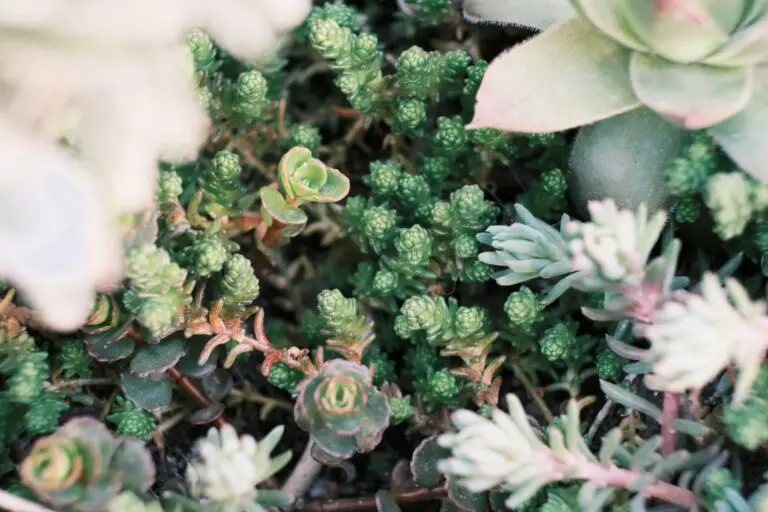
So, when you’re plotting the ‘where’ for your sedum garden, think about these rock stars of the plant world. Picture the rolling landscapes dotted with sedums in their element—on slopes, atop alpine settings, or nestled on a sunny patch by your favorite outdoor sitting area. Embrace their low-maintenance mantra, and you’ll find that choosing the right site doesn’t just satisfy your sedum’s basic needs, it catapults them into a thriving existence that will captivate and inspire.
Soil Secrets: Creating the Perfect Foundation for Sedum
You’ve decided to bring the rugged beauty of sedum into your garden, and you’re in for a delightful journey. But first things first, let’s talk dirt—because even these tough-as-nails plants need the right home to really thrive. It’s not just about throwing seeds into the ground and hoping for the best; sedum’s soil preferences are specific, and getting it right can make all the difference.
Imagine a rocky mountainside or the nooks and crannies of a stone wall. That’s where sedum naturally prospers, which tells us a lot about the drainage it craves in a garden setting. These succulent beauties desire a well-draining soil that laughs in the face of water-logging. They’re the camels of the plant world, storing water in their fleshy leaves and despising wet feet. A mix that resembles the gravelly, sandy habitats they love is key. To conjure up that perfect blend, consider adding coarse sand, perlite, or volcanic rock to your regular garden soil; it’s like making a luxury bed for them to stretch their roots.
Now, let’s get the pH party started. Sedum isn’t fussy and can generally handle a range from slightly acidic to slightly alkaline. However, aiming for a neutral pH will keep them content and blooming. If you’re dealing with soil that’s too extreme on either end of the pH spectrum, take heart—adjusting it is easier than teaching a dog to high-five. Simple additives like garden lime for overly acidic soil or sulfur for too alkaline terrain can bring things into balance.
The composition of the soil should lean towards the gritty side. After all, we’re setting the stage for a drought-resistant, hardy rock star of the plant kingdom. Organic matter is the band manager, keeping everything in check. Add compost or aged manure to enrich the soil with nutrients and improve texture, but just enough to say “I care,” not “I’m coddling you.”
But don’t just take my word for it; pull up a chair and see real gardeners in action with their sedum in the wild. Check out this video for some practical advice on getting your soil mix just right for these resilient plants:
Are you starting to see those patches in your garden where the sedum might soon live out their full glory? Great! But remember, the soil is only one part of the equation; you’ve also got to consider their sunshine and shade needs to really dial in your sedum’s success. It’s a holistic approach to gardening that will pay off with lush, vibrant growth. So let’s roll up our sleeves, get a little dirty, and give those sedums the grounding they need to reach for the sky!
Water Wise: Mastering the Art of Hydrating Sedum
Quenching the thirst of sedum is more art than science, a delicate balance that turns your average green thumb into a masterful plant whisperer. Let’s dive into the essentials of watering these resilient but sometimes finicky plants. Be vigilant, as overwatering is the kryptonite of sedums, leading to mushy leaves and a compromised root system. Fear not, though—our guidelines will help you navigate through the watering woes to keep your sedums splendid.
Like camels of the plant kingdom, sedums store water in their leaves, demanding a well-drained soil mix that mimics their natural rocky habitats. While they may enjoy the occasional drink, they’re capable of surviving droughts with stoic indifference. In the growing season, when sedum shifts into high gear, an increase in hydration supports their spurt of lushness. However, come winter, they prefer a sip over a gulp—too much moisture and they’ll wilt like an overwatered willow.
Seasonal changes are your cues for adjusting your watering strategy. Summer’s heat calls for a little more generosity with water, while the plant’s dormant period in winter means cutting back, letting the soil dry out before offering another drink. It’s not just the calendar you should be eyeing, though—keep an eye on the forecast, too. If rain is doing the job for you, adjust accordingly and let nature take the lead.
Understanding your sedum’s lifecycle provides further insights into their watering needs. New plantings are like toddlers with sippy cups—they need regular, careful drinks to establish themselves. Mature sedums, on the other hand, are akin to self-sufficient teenagers, capable of handling more sporadic watering.
For those visual learners among us, let’s bring these tips to life with a video that exemplifies the fine-tuning required for perfect sedum growth. Watch and learn to avoid the pitfalls of repotting these succulent beauties.
Remember, with sedum, it’s about hitting that sweet spot—hydrating without drowning, offering drought-tough love with a splash of nurturing care. Master these watering techniques, and you’ll see your sedums thrive, turning your garden into a vibrant tableau of succulent success.
Sunlight and Shade: Balancing Sedum’s Exposure
Just as Goldilocks sought porridge that wasn’t too hot or too cold, sedum plants crave the perfect balance of sunlight and shade. These succulent beauties are sun worshippers, but they don’t want to get scorched in the midday heat. Picture a sedum, its plump leaves reaching for the sun, nestled comfortably in a spot where morning rays gently wake it up. The right amount of caress from the sun’s beams encourages those vibrant blooms we all adore, and the splash of afternoon shade helps them avoid a botanical sunburn.

In hotter climates, such as the arid sweep of the Southwest, providing some shade during the peak hours can be as crucial as a cup of water in a desert trek. A well-positioned pergola, or even the dappled shadow of a leafy tree, can offer just the right sunscreen. As for cooler climates, where the sun plays coy, maximize light exposure by placing sedums in south-facing beds or on slopes that angle towards the sun’s smile. This ensures they get their fill of the vital rays without overindulging.
Strategies for optimal light management range from architectural solutions to strategic planting. The reflective bounce-off from a pale wall can serve as a booster for your light-hungry sedums, amplifying the sunshine’s embrace. On the flip side, in sunny climes, consider companion planting with taller florae that lend a protective canopy. Gardening Know How offers a wealth of tips on creating a thriving garden comforting to both plants and the human eye.
Take a leaf from the book of a savvy gardener who once told me, “Watch your garden’s light like a hawk.” She meticulously observed how sunlight traveled across her green space, adjusting her sedum placements with the seasons. The result? A garden alive with colors and textures, a testament to the harmony between plant and their beloved star.
Feeding Your Sedum: A Guide to Fertilization
Let’s dive into the world of sedum care, specifically the role of fertilization. Now, we all might know someone with that enviable green thumb, everything they touch in the garden flourishes! Want to know their secret? Well, when it comes to sedum plants, it’s often down to using the right fertilizer. The key ingredients for sedum success include a blend of nutrients that cater to their unique needs.
Choosing the Right Fertilizer
Picking the perfect fertilizer for your sedum is like selecting the best fuel for a high-end sports car. You need something that will support the high performance expected from these robust plants. A balanced, slow-release fertilizer with equal parts nitrogen, phosphorus, and potassium (commonly known as N-P-K) does wonders. It’s like providing a gourmet meal for your plants; they’ll reward you with vibrant colors and sturdy growth.
Here’s a pro tip for you: during the growing season, a granular or liquid fertilizer with a 10-10-10 or 5-5-5 ratio will help your sedum keep its gorgeous foliage and promote flowering. Remember, moderation is crucial! Just like overeating can be harmful, over-fertilizing can lead to leggy plants and fewer blooms.
Timing and Frequency of Fertilization
Timing is everything when it comes to feeding your plants. For sedum, a light application of fertilizer in early spring can give it the kickstart it needs after the winter slumber. Think of it as a morning coffee for your plants—just the boost needed to wake up and get going. Then follow up with a second feeding right before the blooming period, ensuring a show-stopping display of flowers.
Now, have you ever heard of the “less is more” mantra? This absolutely applies to sedum fertilization. Overdoing it can do more harm than good, leading to salt buildup in the soil and potentially damaging the hardy nature of these succulents. So, keep it to no more than twice a year—trust me, your sedum will thank you for it!
Avoiding Fertilization Faux Pas
Fertilizing your sedum doesn’t have to be a risky business. The key is knowing what pitfalls to avoid. For one, never fertilize a dry plant; ensure the soil is moist to prevent root burn. And remember, if your sedums are planted in rich soil, they might not even need additional fertilization—talk about low maintenance!
Overzealous fertilizing can lead to rapid, weak growth, making plants more susceptible to pests and diseases. It’s better to under-fertilize than to go overboard. Sticking to organic options can be a great way to provide gentle nourishment without the risk of burning your plants.
Want to see the magic in action? Take a peek at this video on fertilizing your succulents and watch these resilient beauties thrive under the right care. It’s a clear illustration of how proper feeding can lead to stronger, more colorful sedums that can resist pests, heat, and even frost.
So, to wrap things up (remember, no conclusions here!), fertilizing your sedum plants doesn’t have to be complex. With the right type of fertilizer, a steady hand, and a watchful eye on frequency, your sedum garden will become the envy of the neighborhood, blossoming with health and vigor!
Propagating Sedum Plants: Tips and Techniques
Embarking on the fascinating journey of propagating sedum plants can be an engaging and fruitful endeavor. Whether you are a seasoned gardener or just starting your horticultural explorations, learning how to multiply these resilient succulents will add a vibrant touch to your garden-scape. Here, we offer you a step-by-step guide on how to successfully propagate sedum through cuttings, division, or seeds, pinpointing the best times of year for each method.
Starting with Cuttings: The Speedy Path to New Growth
The simplicity of sedum propagation by cuttings is a delightful surprise for many plant enthusiasts. To begin, select a healthy stem and clip a piece measuring approximately 2 to 4 inches. Strip the lower leaves, leaving a bare stem that can be inserted directly into a moist potting mix. I vividly remember the first cuttings I took—one from the flourishing ‘Autumn Joy’ sedum in my backyard. Within weeks, tiny roots had emerged, a testament to the endless potential resting in a single snippet of sedum.
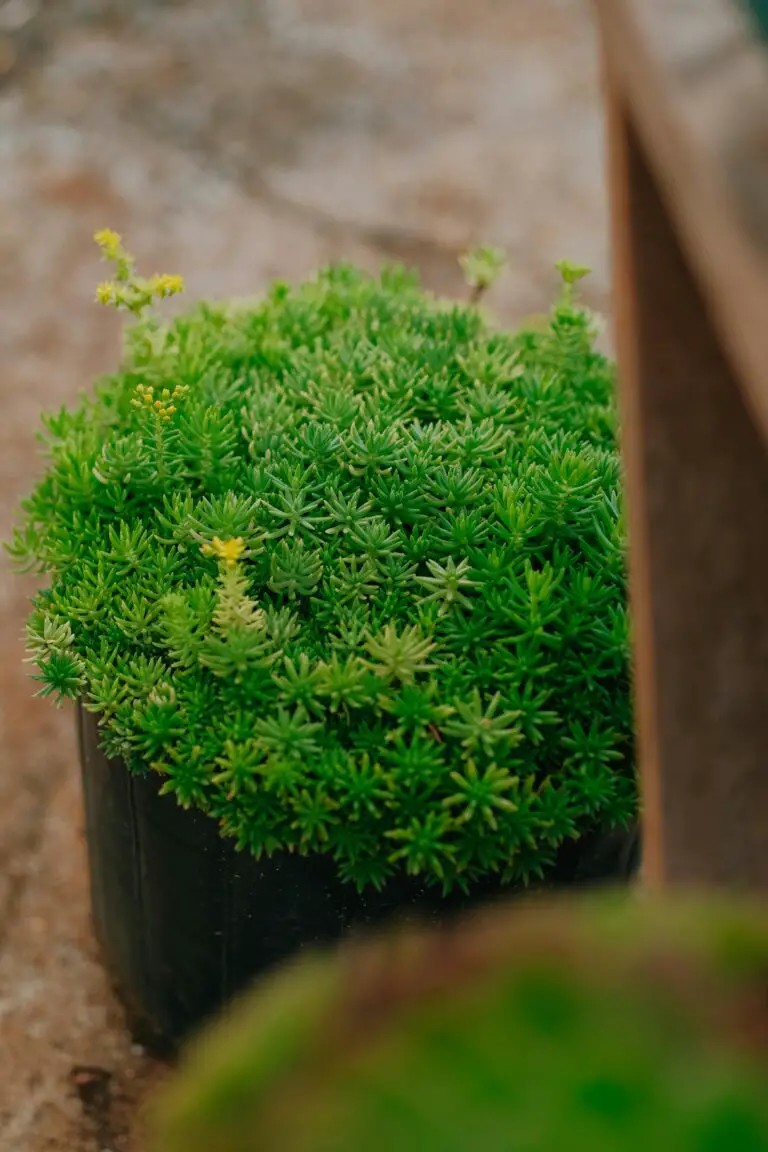
The Joy of Division: Sharing Your Sedum Successes
Springtime unfurls the perfect opportunity for sedum division. Gently unearth your mature sedum, ensuring you have a portion of roots and shoots. Slice through the root ball with confidence—just as I did last spring when my ‘Dragon’s Blood’ sedum outgrew its cozy corner. Carefully separating the clumps, I replanted them around the garden. Not only did this help rejuvenate the parent plant, but it also gave rise to new, vibrant clusters of foliage throughout my landscape.
Growing from Seed: Sowing the Seeds of Patience
Although awaiting sedum seedlings requires patience, the eventual sprouting is a rewarding sight. Start with a tray filled with pre-moistened seed starter mix. Sprinkle the sedum seeds atop and lightly press them into the soil—you don’t need to cover them. Place the tray in a warm, well-lit area, but out of direct sunlight. Consistently keep the soil slightly moist, and in no time, you will witness seedlings as eager to grow as the midsummer sun is to rise. It was during the cool days of early autumn that I reaped the fruit of my labors, watching my ‘Blue Spruce’ seedlings emerge like a miniaturized forest of vibrant, blue-toned tips.
Each method of propagating sedum presents its own unique set of thrills and challenges. While cuttings promise quick results, division allows you to revitalize and spread your existing plants. Meanwhile, growing from seeds offers a deeper understanding of the plant’s lifecycle. Whichever method you choose, embrace the process and prepare to be enchanted by the remarkable resilience and beauty of sedum. Let your garden be a testament to your nurturing spirit and the transformative power of propagation!
Common Pests and Problems: Protecting Your Sedum
As you eagerly anticipate the lush foliage and vibrant blooms of your sedum plants, it’s important to stay vigilant against the uninvited guests that may come calling. Yes, we’re talking about those pesky invaders – pests and diseases! But fear not, fellow gardeners, for we have the strategies to ensure your sedums stand strong and healthy.
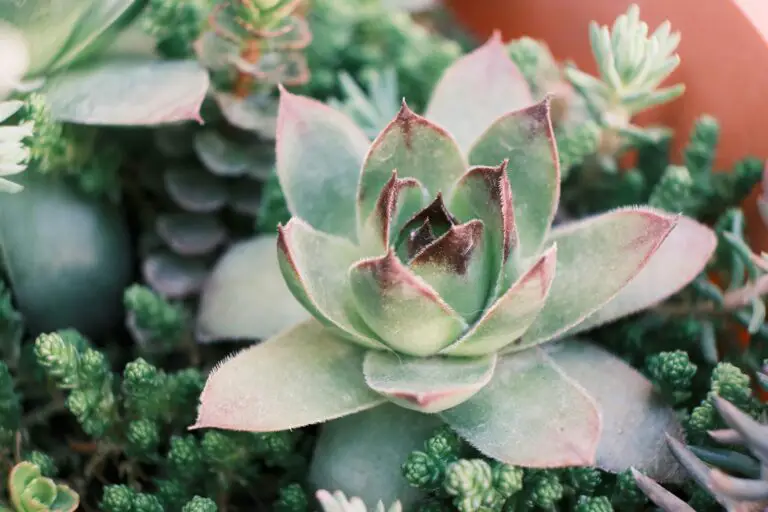
Imagine you’re sipping a cool beverage in your garden, admiring your handiwork, when you notice tiny aphids conspiring on the tender shoots of your sedum. These sap-sucking critters can form armies seemingly overnight, but the solution is simple – a gentle blast of water can send them packing. For more stubborn infestations, insecticidal soap is a trusty ally.
Snails and Slugs: The Sneaky Munchers
By moonlight, slugs and snails slide over to your sedum buffet, leaving unsightly holes and silvery trails. Deter these mollusks with a barrier of diatomaceous earth or go the non-lethal route by luring them away with grapefruit rinds or beer traps – a party they’ll never leave! Remember, a balanced ecosystem with natural predators like birds and frogs will help maintain these slimy visitors at bay.
Fungal Foes: Battling Blight and Mildew
Murky weather may invite unwanted fungal guests like powdery mildew, casting a white spell over your sedums’ leaves. Want to break the curse? Mix a potion of baking soda, water, and a dollop of dish soap. It’s an effective remedy for mildew mischief. Keep your plants spaciously positioned to allow for air to circulate, as good air flow is a formidable opponent to fungus among us.
Now, let’s not forget root rot – a treacherous disease that thrives in waterlogged soil. Imagine your sedum’s roots gasping for air, trapped in soggy earth. The rescue plan? Ensure your garden beds have proper drainage, and your watering practices don’t leave your sedum’s feet wet for too long. Sometimes the best offense is a good defense!
With these tips in your gardening toolkit, you’ll be well-armed against common pests and problems. Stay observant, and at the first sign of trouble, remember to act swiftly. Your sedums are counting on you to protect them, and with a bit of know-how and preventive care, you’ll both enjoy a thriving garden season.
Sedum Through the Seasons: Year-Round Care Schedule
To cultivate a lush tapestry of sedum in your garden, understanding the seasonal needs of this versatile succulent is key. Much like a skilled conductor leads an orchestra through a symphony, a gardener must guide their sedum through the varied tempos of the seasons. Let’s dive into the year-round care schedule that ensures your sedum not only survives but thrives.
Spring: The Awakening Melody
Imagine the first warm notes of spring coaxing your sedum out of its winter slumber. This is the time for renewal and growth. Begin by clearing away any dead foliage from the previous year—think of it as tuning your instruments. Water your sedum sparingly, but as the sun’s warmth intensifies, gradually increase irrigation. Sedum’s first performance of the year is delicate; ensure it has plenty of light to bask in its revival.
Summer: The Dynamic Crescendo
As the season crescendos into summer, your sedum hits its stride. This is when full sun acts as a spotlight, amplifying the plant’s vibrant colors and spurring blooming. Yet, like a virtuoso mindful of their tempo, you mustn’t overdo it—sedum is drought-tolerant but will appreciate a drink during particularly dry spells. Keep watch for the occasional pest, the uninvited critic, but rest assured that sedum’s resilience often makes it an easy act to follow.
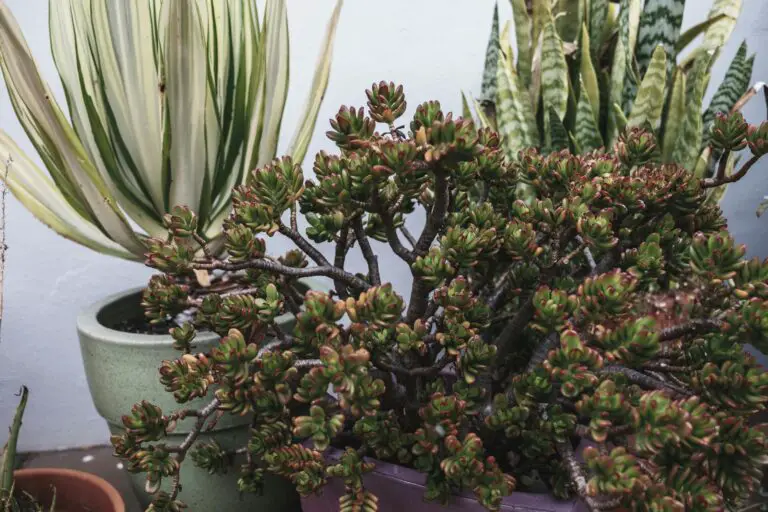
Fall: The Harmonious Transition
In the gentle cooling of fall, sedum’s symphony continues with a subtle change in key. This season orchestrates the preparation for dormancy. Reduce watering as the days shorten, and consider a layer of mulch to insulate your plant’s roots from the impending cold. It’s also the ideal season for division—think of it as auditions for next year’s performance—ensuring the longevity and vigor of your sedum ensemble.
Winter: The Restful Interlude
Winter grants your sedum a well-deserved interlude. As the garden quiets under a blanket of snow or in the brisk chill of frosty air, there’s little for the gardener to do. Sedum’s succulent leaves store much-needed water, allowing it to endure the sparse conditions. On occasion, brush away heavy snow to prevent foliage damage—much like dusting off a cherished instrument awaiting its next recital.
Through each season, your sedum requires a conductor’s touch—understanding that each period brings its rehearsals, performances, and encores. By following this year-round care schedule, you’ll ensure that when the garden’s stage lights up, your sedum will be ready for a standing ovation.
Frequently Asked Questions
Are you looking to kickstart your sedum sanctuary or elevate your existing garden? Great! You’ve probably got a scroll of questions, and we’ve got the scoop on what sedum needs to flourish. Here’s where your green-thumb ambitions meet real-world know-how.
What’s the Secret to a Healthy Sedum Plant?
You’ve likely seen these hardy succulents thriving with minimal fuss, but don’t think they don’t have preferences. Sunlight is their best friend—6 hours of direct exposure is the baseline for happiness. Soil-wise, they’re not picky eaters but they demand well-drained dishes. Picture them in their natural rocky hilltops—the less they sit in water, the happier they are. More like camels than fish, these plants!
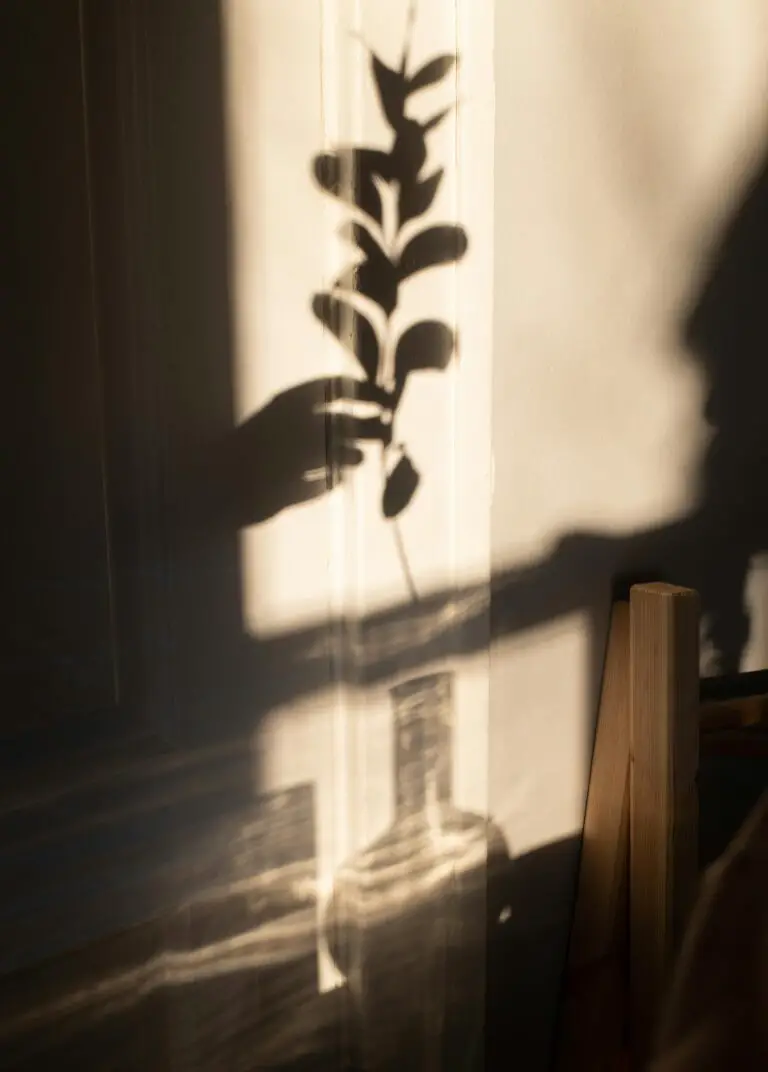
Can Sedum Survive the Cold?
Totally! Most varieties can laugh in the face of frost. While others get the chills, sedums slip into their super-survivor mode, even under a blanket of snow. So if winter makes an unexpected comeback, like that character in a TV show you thought was gone for good, your sedums will stick around for the next season.
Do They Need Regular Watering?
Remember, they’re succulents. They’ve got built-in water tanks in those fleshy leaves. Offer a drink when the soil feels dry but don’t make their roots swim. Think of it like coffee—a sedum enjoys a good, strong shot, but you wouldn’t want to soak them in an espresso pond every morning.
Is Fertilizer Necessary for Sedum Growth?
Fertilizer to sedum is like that occasional spa day—nice, but not a weekly indulgence. They’re the epitome of low-maintenance love. Give them a little boost in the growing season if you’d like, but it’s not a deal-breaker. Remember, moderation is key; too much of a good thing, and you’ll be dealing with more leaves than your rake can handle.
How About Pests and Diseases?
Sedums are like the cool kids in the plant world; pests often don’t bother. But if an uninvited guest does drop by, the remedy is simple: a gentle insecticidal soap or a blast of water to evict those freeloading aphids. As for diseases, good airflow and avoiding wet leaves are your best tactics. It’s like keeping good company and washing your hands—simple preventative measures go a long way.
Any Tip for Propagating Sedum?
Oh, it’s as easy as pie! Snip off a stem, let it callous over for a day or two (think of it as a plant Band-Aid), then pop it in some soil. It’s a bit like copying your favorite song onto a mixtape to share—sedums don’t mind, they’re generous like that. Give it some time, and boom, you’ve got Sedum Junior sprouting up ready for the garden playlist.



